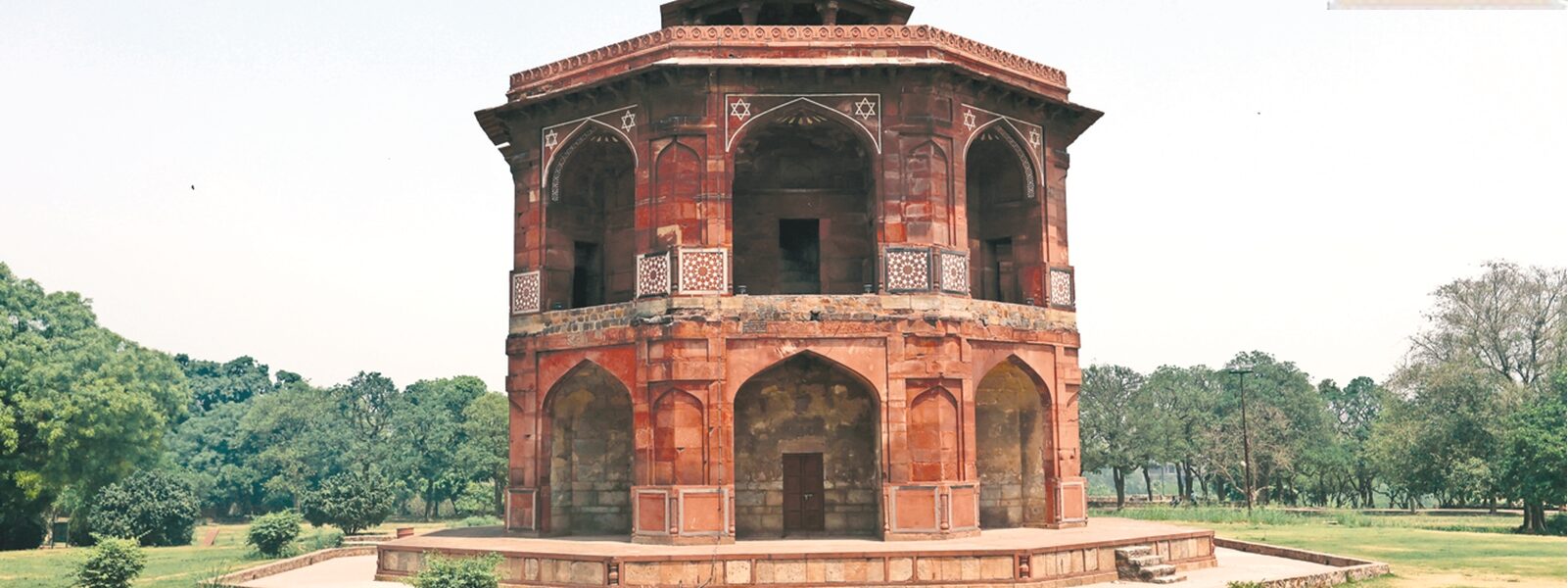Palace, observatory? Many shades of Sher Mandal, where Humayun met his end | Delhi News
A popular legend about Humayun, the Mughal emperor who succeeded his father Babar to the throne in the 16th Century, is that he fell to his death after tripping down the stairs of his observatory — some versions say it was a library — to answer a prayer call but few know that the ruler’s beloved structure is situated in the heart of Delhi.
A little over a kilometre away from his final resting place, the iconic Humayun’s Tomb, is the centuries-old Purana Qila which has borne witness to the rise of empires and horrors of Partition when it served as a home for refugees.
Enter its main gate, take a right from the T-point and one will be greeted by a lone, red sandstone structure, with a cupola on the top. This is the Sher Mandal.
It is widely believed that Sher Mandal was built by Sher Shah Suri, ruler of Bihar who had managed to defeat the Mughal Empire to establish his rule, until his life was cut short in an accident, paving the way for Humayun’s return.
Historian and author Rana Safvi writes in her book, The Forgotten Cities of Delhi, “Emperor Sher Shah constructed this in 1541 AD as a ‘Jahannuma’ (or, ‘reflecting the world’), naming it Sher Mandal. It is said this small palace could not be completed.”
However, author and historian Swapna Liddle writes in her 14 Historic Walks of Delhi: “Sher Mandal is a name familiar in history as a palace built by Sher Shah, though it is not at all certain if this was that building; it may have been Humayun who actually had this constructed. This is because, in style, this building is quite similar to some Mughal Pavilions described in historical accounts or seen in illustrations of that period. It certainly does not look like a palace…”
According to reformer and educationist Sir Syed Ahmed Khan’s book Asar-us-Sanadid (The Remnant Signs of Ancient Heroes), the entire fort was once called Sher Mandal “because of this beautiful building, which is constructed completely of red sandstone. The design includes a narrow circumambulatory aisle constructed around a central room.”
Going by Sir Syed’s book, first published in 1847, the structure served both as a library and an informal observatory. “He (Hum-ayun) would also climb to the top to study the sun, moon and stars [astronomy was a passion].”
Throwing further light on the architecture of the monument, Safvi writes in her book: “Sher Mandal is an octagonal three-storeyed monument with a narrow balcony running all around the second. On the third floor is an open pavilion with a parapet running around it. This is surmounted by a small eight-columned cupola, which is decorated with floral and geometric design…”
In January 1556, barely months after he had regained the throne, Humayun fell to his death at Sher Mandal.
Sir Syed writes in his book: “Death needs but an excuse? Once, while going down the stairs he heard the call for evening prayers and sat down until the call was completed. Then, as he pulled himself up, holding on to the chain that acted as a banister [jarib], it slipped from his hands and he fell down the length of the staircase, dying a few days later from the severity of the injuries he sustained.”
Later-day historians, however, refute this theory, saying the staircase was winding and he could not have fallen from it, according to Safvi. “Humayun was a keen astronomer, and that night Venus was rising late. He was studying it when he fell over,” Safvi told The Indian Express.
“Mountstuart Elphinstone and John Clark Marshman say that he fell headlong from the parapet of the roof. The chronogram of his death is: ‘Humayun Badshah az baam uftad [Emperor Humayun fell down from the roof]’. This gives credence to the fact that he fell from the roof and not stairs,” she writes in her book.
Rameen Khan, founder of City Tales, which conducts heritage walks in Delhi, said despite being a grand monument in its own right, it is tragic that the only aspect Sher Mandal is discussed today is in relation to Humayun’s death. “Sher Mandal is probably one of the few examples of a grand recreational pavilion standing in Delhi. Its ornamentation, proportions and location make it a fascinating sight,” he told The Indian Express.
However hard one may try, it is difficult to view Sher Mandal on a summer evening and not think about Humayun’s last few hours on earth.
After all, as Sir Syed writes in his book: “It serves as a warning of man’s mortality.”




